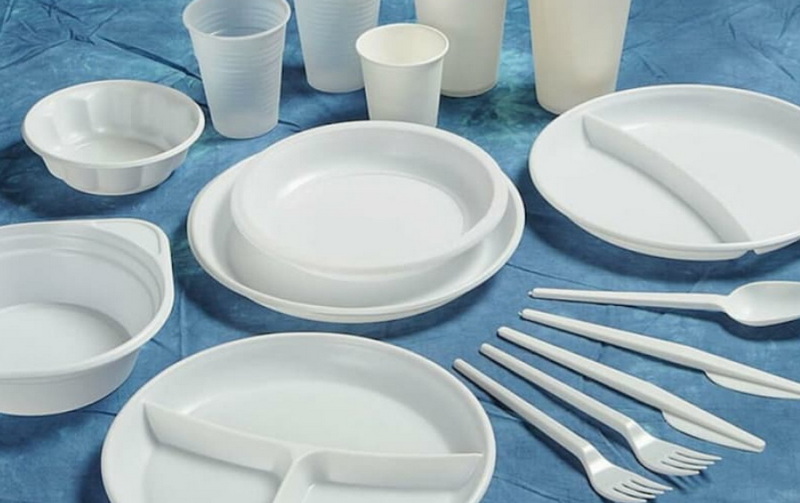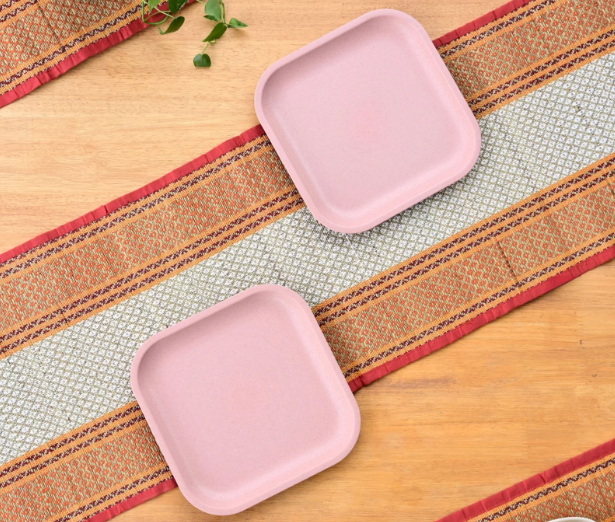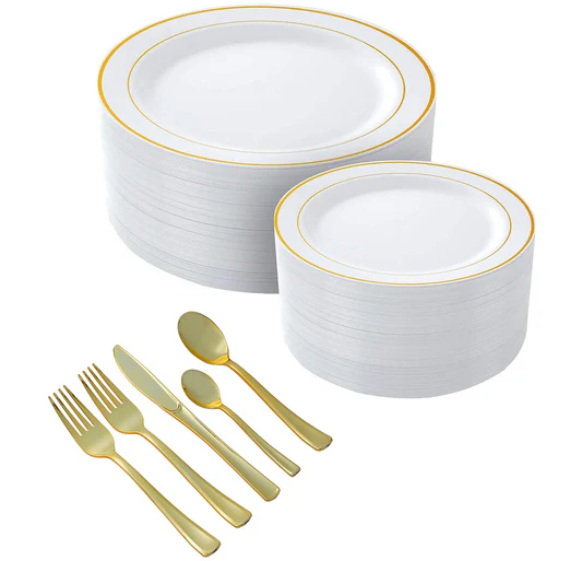
Content Menu
● Introduction to Disposable Tableware Sets
>> Materials Used in Disposable Tableware Sets
● Safety Considerations for Hot Food
>> Chemical Leaching
>> Temperature Resistance
>> Handling Practices
● Environmental Impact of Disposable Tableware Sets
>> Eco-Friendly Options
>> Environmental Concerns
● Choosing the Right Disposable Tableware Sets
>> Tips for Safe Use
● Benefits of Disposable Tableware Sets
>> Convenience and Cleanup
>> Cost Considerations
● Sustainable Alternatives
>> Compostable Tableware
>> Reusable Options
● Conclusion
● Frequently Asked Questions
>> 1. Are all disposable plastic plates safe for hot food?
>> 2. Can I microwave food on disposable paper plates?
>> 3. What are the eco-friendly alternatives to traditional plastic tableware?
>> 4. How should I dispose of used disposable tableware?
>> 5. Are wooden cutlery sets safe for both hot and cold foods?
● Citations:
Disposable tableware sets have become increasingly popular due to their convenience and ease of use, especially in large events or take-out services. However, concerns about their safety, particularly when used with hot food, have sparked debates. In this article, we will delve into the world of disposable tableware, exploring its materials, safety considerations, and environmental impact. We will also discuss the best practices for using these sets safely and effectively.

Introduction to Disposable Tableware Sets
Disposable tableware sets, including plates, bowls, cups, and cutlery, are designed for single-use purposes. They are made from various materials such as plastic, paper, wood, or biodegradable alternatives like bagasse or bamboo. Each material has its advantages and disadvantages, which we will discuss in detail.
Materials Used in Disposable Tableware Sets
1. Plastic: Plastic is a common material for disposable tableware due to its durability and affordability. However, not all plastics are suitable for hot foods. Heat-resistant plastics like polypropylene are recommended for high-temperature applications. Polypropylene is widely used in disposable cutlery and tableware because it is durable and resistant to deformation under heat[2][7].
2. Paper: Paper plates are lightweight and compostable but are generally not recommended for hot foods as they can become soggy and lose their structure. Some paper plates may have a plastic coating, which can make them more suitable for hot foods but may also leach chemicals when heated[1].
3. Wooden: Wooden cutlery and tableware are eco-friendly and can handle both hot and cold foods without warping. They are made from natural materials like birch and offer a sustainable alternative to plastic[6].
4. Biodegradable Materials: Materials like bagasse and bamboo are eco-friendly, sturdy, and suitable for hot foods. Bagasse plates, made from sugarcane fibers, are compostable and offer a healthier alternative to traditional paper plates[1][4].
Safety Considerations for Hot Food
When using disposable tableware sets for hot food, safety is paramount. Here are some key considerations:
Chemical Leaching
Plastic plates, especially those not labeled as "BPA-free," can leach harmful chemicals into food when exposed to high temperatures. It's crucial to choose food-grade plastics that comply with safety standards. Similarly, paper plates with plastic coatings may also pose risks if they contain substances like PFAS[1][2].
Temperature Resistance
Disposable tableware must be able to withstand the temperatures of the food it holds. Materials like polypropylene and biodegradable options are more suitable for hot foods. Wooden cutlery is also a good choice as it doesn't warp under heat[6].
Handling Practices
Avoid microwaving food on plastic plates or exposing them to direct heat sources, as this can cause deformation or chemical release. Always check the manufacturer's guidelines for safe use practices.

Environmental Impact of Disposable Tableware Sets
While disposable tableware sets offer convenience, their environmental impact is significant. Most plastic tableware is not biodegradable and contributes to plastic waste. However, eco-friendly alternatives like bagasse and bamboo plates are compostable and reduce waste.
Eco-Friendly Options
- Bagasse Plates: Made from sugarcane fibers, these plates are compostable and suitable for hot foods. They are a sustainable alternative to traditional paper plates and reduce the environmental footprint associated with paper production[1][3].
- Bamboo Plates: Bamboo is a sustainable resource, and plates made from it are biodegradable and durable. Bamboo has a high growth rate, making it a highly renewable resource for tableware production[5].
- Palm Leaf Plates: These plates are made from naturally fallen areca palm leaves, making them biodegradable and compostable. They are sturdy enough to hold both solid and liquid foods without leaking or breaking[5].
Environmental Concerns
Traditional disposable tableware contributes to resource depletion, pollution, and waste. The production process involves the release of pollutants and greenhouse gases, while the disposal often results in long-lasting waste in landfills and oceans[3][8]. Eco-friendly alternatives help mitigate these issues by reducing plastic waste and promoting sustainable practices.
Choosing the Right Disposable Tableware Sets
When selecting disposable tableware sets for hot food, consider the following:
1. Material: Opt for heat-resistant materials like polypropylene or biodegradable options.
2. Certifications: Ensure the products meet safety standards such as REACH compliance for plastics.
3. Eco-Friendliness: Choose compostable or recyclable materials to reduce environmental impact.
Tips for Safe Use
- Check for Damage: Before use, inspect the tableware for any signs of damage or contamination.
- Avoid High Temperatures: Do not microwave or expose disposable tableware to direct heat unless specifically designed for such use.
- Proper Disposal: Dispose of used tableware according to local waste management guidelines.
Benefits of Disposable Tableware Sets
Disposable tableware sets offer several benefits, including convenience and ease of cleanup. They are ideal for large events or situations where washing dishes is impractical. However, it's essential to weigh these benefits against the environmental costs and consider eco-friendly alternatives when possible[4].
Convenience and Cleanup
Disposable plates simplify the cleanup process, eliminating the need for washing, drying, or storing reusable dishes. This convenience is particularly valuable in busy environments or during large gatherings[4].
Cost Considerations
While disposable plates may seem cost-effective in the short term, the ongoing costs of water, detergent, and energy for washing reusable dishes can be significant. However, the environmental impact of disposable tableware often outweighs these savings[4].
Sustainable Alternatives
As consumers become more environmentally conscious, sustainable alternatives to traditional disposable tableware are gaining popularity. These alternatives not only reduce waste but also promote a circular economy by using renewable resources.
Compostable Tableware
Compostable tableware is made from sustainable materials that break down naturally into organic matter. This reduces the carbon footprint associated with production and disposal, contributing to a more sustainable future[3].
Reusable Options
Reusable dinnerware is another sustainable option. While it requires an initial investment, it reduces waste over time and can be more cost-effective in the long run. Reusable plates also have a lower environmental impact compared to disposable options[8].
Conclusion
Disposable tableware sets can be safe for hot food if chosen and used correctly. It's essential to select materials that are heat-resistant and comply with safety regulations. Additionally, opting for eco-friendly options can help reduce environmental impact. By following best practices and choosing the right materials, you can ensure a safe and convenient dining experience.

Frequently Asked Questions
1. Are all disposable plastic plates safe for hot food?
- No, not all disposable plastic plates are safe for hot food. Only heat-resistant plastics like polypropylene are suitable for high temperatures.
2. Can I microwave food on disposable paper plates?
- No, it's not recommended to microwave food on paper plates as they can become soggy and potentially leach chemicals into the food.
3. What are the eco-friendly alternatives to traditional plastic tableware?
- Eco-friendly alternatives include bagasse, bamboo, and wooden tableware, which are biodegradable and compostable.
4. How should I dispose of used disposable tableware?
- Dispose of used disposable tableware according to local waste management guidelines. Compostable materials should be sent to industrial composting facilities.
5. Are wooden cutlery sets safe for both hot and cold foods?
- Yes, wooden cutlery is safe for both hot and cold foods and is a durable, eco-friendly option.
Citations:
[1] https://diyecobox.com/health-risks-of-paper-plates/
[2] https://www.vinzorwood.com/7-materials-used-to-produce-disposable-cutlery-and-their-advantages-and-disadvantages/
[3] https://foliumware.com/the-environmental-impact-of-disposable-tableware-a-comprehensive-guide/
[4] https://www.thekayacollection.com/blogs/news/why-use-disposable-plates-convenience-benefits-tips-for-choosing-the-best-ones
[5] https://arbhuenterprises.com/top-10-ecofriendly-tableware-options-for-sustainable-dining/
[6] https://droppe.com/blog/article/disposable-cutlery-for-hot-vs-cold-foods-what-to-consider/
[7] https://www.cos.net.au/c/cospedia/everything-about-disposable-cutlery-and-crockery
[8] https://anationofmoms.com/2023/11/disposable-tableware.html
[9] https://droppe.com/blog/article/food-utensils-buyer-guide/
[10] https://palmware.in/ultimate-guide-to-eco-friendly-disposable-tableware/
[11] https://www.freshtableware.in/post/is-it-safe-to-consume-food-served-on-plastic-plates
[12] https://www.bioleaderpack.com/8-different-kinds-of-materials-used-in-eco-friendly-disposable-tableware/
[13] https://www.quitplastic.in/post/the-environmental-impact-of-traditional-disposable-tableware
[14] https://www.a1cashandcarry.com/blogs/blog/disposable-dinnerware-an-essential-supply-for-restaurants-cafes-events
[15] https://poshsetting.com/collections/eco-friendly
[16] https://www.cnnbcy.com/news/industry-news/the-temperature-resistance-of-disposable-tableware-limits-its-application-scenarios.html
[17] https://www.sontexchina.com/news/7-materials-used-to-produce-disposable-cutlery-and-their-advantages-and-disadvantages.html
[18] https://greenpaperproducts.com/blog/the-importance-of-eco-friendly-disposable-tableware-for-food-businesses
[19] https://www.webstaurantstore.com/guide/621/disposable-dinnerware-buying-guide.html
[20] https://www.canecart.in/2024/11/06/choosing-eco-friendly-disposable-plates-and-meal-trays-for-any-occasion-the-complete-guide/

















